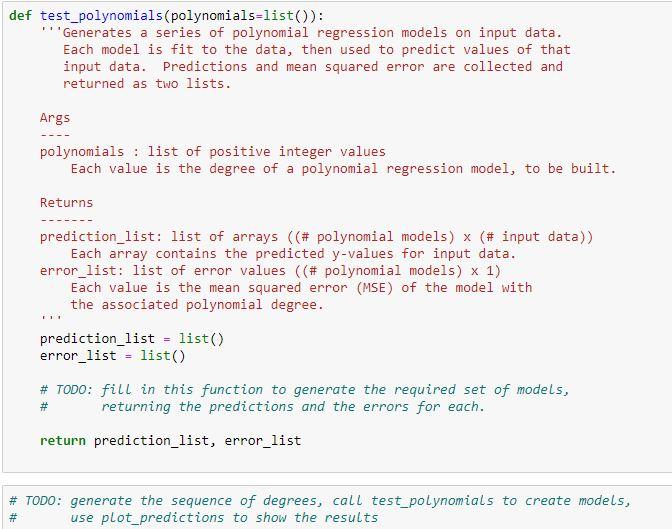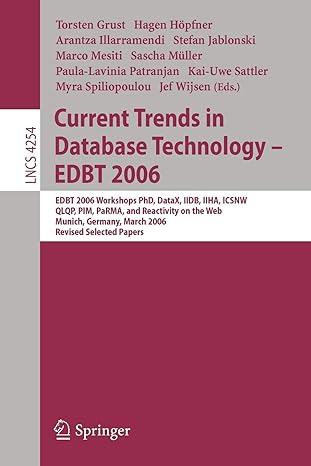Question
Fill in the test_polynomials function. This function should take in a list of positive integer values, corresponding to different degrees for polynomial models (so if
Fill in the test_polynomials function. This function should take in a list of positive integer values, corresponding to different degrees for polynomial models (so if the degree is 1, we get a purely linear model, if it is 2, we first transform the data so it is degree-2, and so on). Each model should be fit to the entire data-set, and then the model should be used to predict outputs for that data-set. The function will return two lists. One will consist of the predictions, i.e., it will be a list of length P, where P is the number of different polynomial degrees, and each element of the list consists of the N output values, where N is the size of the overall data-set). The other will consist of the P error values for the models, where the error is calculated using the mean squared error metric (MSE). Once the function is completed, it should be called using the sequence of degrees d {1, 2, 3, 4, 5, 6, 10, 11, 12}. Once the function returns its two lists, the plot_predictions function (already written for you) will produce a plot containing each of the models predictions, along with their MSE values (found in the title area of each subplot).

Step by Step Solution
There are 3 Steps involved in it
Step: 1

Get Instant Access to Expert-Tailored Solutions
See step-by-step solutions with expert insights and AI powered tools for academic success
Step: 2

Step: 3

Ace Your Homework with AI
Get the answers you need in no time with our AI-driven, step-by-step assistance
Get Started


